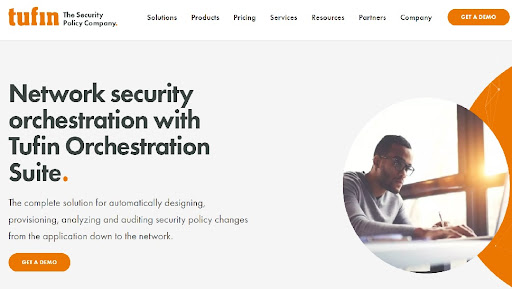TechRadar Verdict
Tufin Orchestration Suite is a multivendor-compatible tool with automation features to streamline the workflow and help improve network security. Although it can be slow at times, it's a solid choice for those who value creating in-depth reports and change management.
Pros
- +
Firewall policy management
- +
Automated audit reports
- +
Seamless integration with other security technologies
- +
In-depth rule optimization
Cons
- -
Slow performance at times
- -
Occasional bugs
Why you can trust TechRadar
With over 2.000 customers, the Israeli-founded company helps businesses simplify the management of large complex networks with Tufin Orchestration Suite. The software tool secures mission-critical workloads across multiple firewalls, private and public clouds, and network devices by combining their network security management into one comprehensive solution.
Tufin offers users a single solution designed to meet the needs of both network and cloud security teams while reducing costs and ensuring compliance with regulations and internal policies.
Furthermore, Tufin was designed with agility in mind by focusing on the automation of security policies, risk analysis, network configuration, and continuous compliance across multiple and hybrid-cloud environments and on-site models. Coupled with intelligent change management automation, users gain real-time visibility into application connectivity, devices, and all network assets.
The official site is presented in a simple yet helpful design conveying all of the necessary information efficiently. These include video presentations, guides, case studies, webinars, solution briefs, and a cybersecurity glossary. The shown information makes it crystal clear how their tool is meant to be used and what for.
Plans and pricing
As stated on the official Tufin site, pricing largely depends on the organization's size, the number of users, and the options included in the package. For reference purposes, Version R13-2 of the Tufin Security Suite was priced at $21.500 for SecureTrack and $45.000 for the entire suite.
However, to find out how much exactly this tailor-made solution will cost, your best bet is to request a price quote by filling out an application form on their official site. To submit this form, you'll have to enter some personal information, including your full name, email, and phone number.
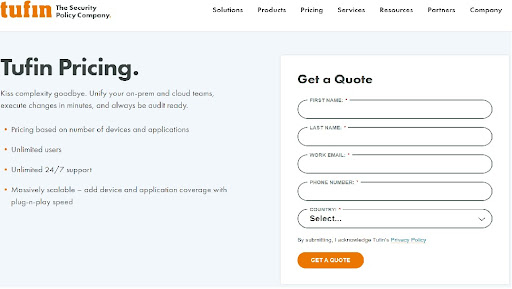
Features and Functionality
As already mentioned, the solution can be deployed in cloud environments or on-site models, depending on the user's preferences. In both cases, it’ll offer a smooth network change management experience.
Since the solution comprises three models: SecureTrack, SecureChange, and SecureApp, the functionality and features will depend on what has been bought from Tufin. SecureTrack is the only mandatory model and represents the solution's foundation. The module manages network devices, rules, security groups, firewalls, and private and public clouds from a centralized location.
SecureChange represents an automation system providing users with flexible workflows and streamlines repeatable, auditable, and policy-driven processes. It helps with rule review and identifying inactive owners, helps manage multi-cloud paths, enables continuous compliance, and checks for vulnerabilities in the network.
SecureApp focuses on application-centric security policy management, helping network security teams deploy and maintain application connectivity, monitor business continuity, ensure compliance and automate network changes.
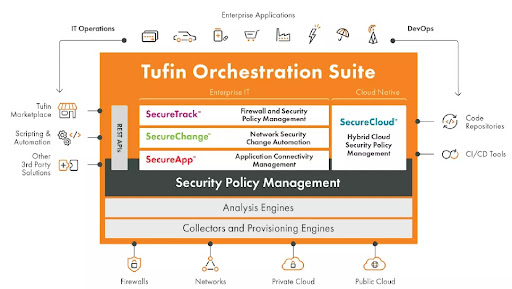
Whether you want to focus on only one of the models or all of them, there is no doubt that this tool is excellent at managing firewall rules. We found it to help remove unused, redundant, or over-permissive firewall rules. Moreover, if you remove a server for any reason, the solution eliminates all rule sets and policies associated with that server.
High integration is one more functionality this solution does well with a comprehensive network topology and the broadest integration supporting multitude of vendors.
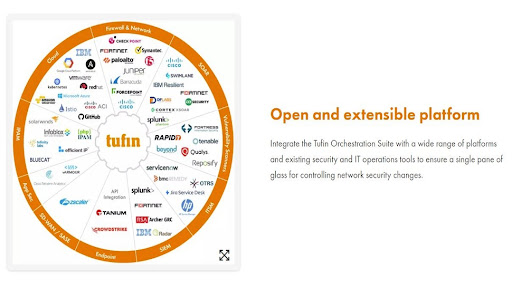
Interface and ease of use
Tufin is a security management tool whose mission is to help manage all the network aspects, help identify weak spots, and take corrective measures to minimize threats.
While the installation can vary based on the license bought and the models chosen, its core capabilities include firewall policy management, workflow integration, a whole variety of reports, and performance tuning.
Customers can deploy the solution in hardware or virtual devices where a pre-installed VM image is given to them to deploy on their systems. Moreover, complete network management can be conducted from a cloud environment.
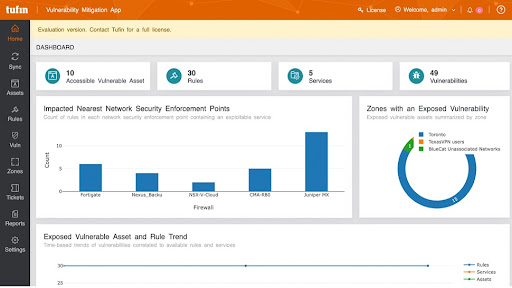
The dashboard is simple, clear, and straightforward, providing users with an overview of all the available features. Results are presented in nice graphics that are easy to read and export, while the variety of reports should be able to satisfy the needs of most customers.
Moreover, users get an outline of rules, violations, and objects for various vendors over a single page, making it easy to track changes and remove redundant rules.
The change management system and detailed auditing allow for determining if the change was authorized and applicable to the intended task. If applicable, after the evaluation, the solution will try to avoid additional rules by correcting the existing ones.
Customer support
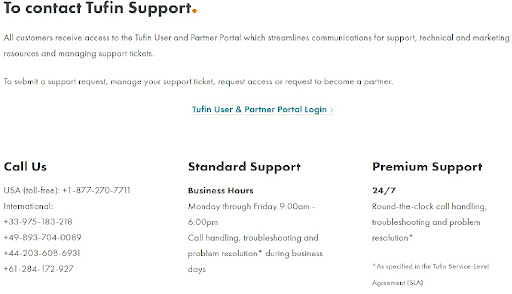
All of Tufin's customers receive access to the Tufin User and Partner Portal, which prevent unnecessary customer support queries and streamline communication with marketing and technical staff.
Customers can choose between Standard and Premium Support packages, where Premium Support offers round-the-clock 24/7/365 troubleshooting. The Standard Support is limited to business days from 9:am to 6:00 pm.
Additionally, users can also turn to Tufin Knowledge Center, an open portal for technical and installation documentation such as Release Notes, User Guides, Technical Notes, Developers Guides, and What's New …?.
Furthermore, users can report software vulnerabilities on the support page, which helps the company deliver a more secure product.
Competition
Similar to Tufin, Cisco Secure Firewall Management Center is a management system focused on firewall threat policy and intrusion detection. It encompasses a next-generation intrusion prevention system, security task automation, and rapid threat containment. Cisco is a solid alternative, although with limited features update.
Another competitor that comes to mind is FireMon, which offers a comprehensive suite of security management tools that provide users with complete control of network security, help identify vulnerabilities, and help monitor and optimize policies. Additionally, it supports the function of recording log history, including firewall rules, rule documentation, and rule certification details.
Finally, Palo Alto Networks Panorama offers an intuitive GUI called Panorama, where users can easily configure everything related to firewall security and avoid duplicate task policy, configuration, etc. High reconfigurability makes the tool versatile, but high licensing costs could be limiting for many potential customers.
Final verdict
Tufin Orchestration Suite is a powerful multi-vendor compatible network management tool with security mapping, deployment facilitation, firewall configuration, and automated reporting. Although slow at times, it is a solid tool that does everything you expect it to do by offering a wide range of security management tools beyond just the firewall.
- These are the best firewalls right now
Sead is a seasoned freelance journalist based in Sarajevo, Bosnia and Herzegovina. He writes about IT (cloud, IoT, 5G, VPN) and cybersecurity (ransomware, data breaches, laws and regulations). In his career, spanning more than a decade, he’s written for numerous media outlets, including Al Jazeera Balkans. He’s also held several modules on content writing for Represent Communications.
